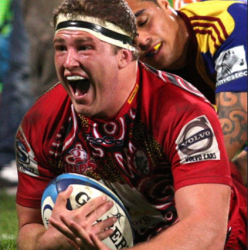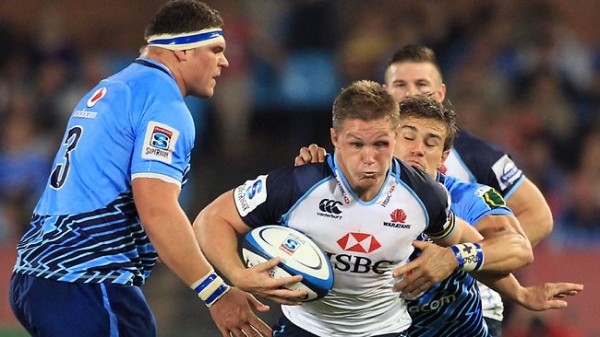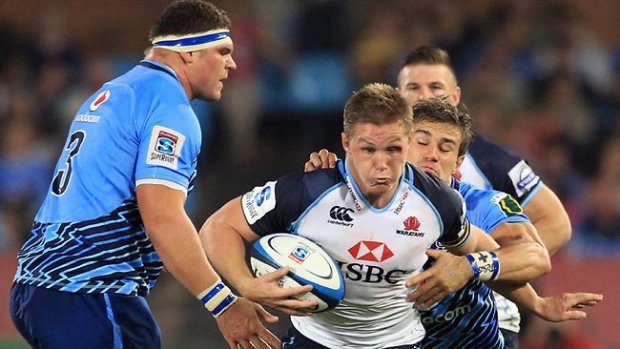This year, Green & Gold rugby is promoting a Fantasy Super Rugby competition (register at http://fantasy.rugby.com.au/). The prizes on offer, including Wallaby jerseys and a box at Bledisloe I are, quite simply, awesome. But if you’ve never played before, how can you hope to compete against seasoned veterans – you know, the guys staying up to 3am to watch a maul-fest between the Stormers and the Bulls featuring all the attacking creativity of an English rugby team c. 1991?
Here’s a few tips to get you started.
Look at the Rules First

Every fantasy competition measures performance differently. In many leagues, for instance, being involved in lineouts (either as the hooker throwing or the jumper receiving) gets you points, making the hooker a key player and, over the season, often the highest point scorer on any team. The G&GR league doesn’t pay for lineouts, so don’t go putting all your money on a lineout specialist (think Victor Matfield, Rob Simmons, or Dave Dennis).
Similarly, a lot of leagues give points for tackles bust, which makes guys like Ben Smith who sometimes seem impossible to tackle, invaluable. The G&GR league doesn’t, instead placing a premium on metres gained with the ball in hand.
Finally, lots of leagues give points for try assists or line breaks created, which encourages the selection of an attacking 10 who puts his teammates into space, like Aaron Cruden or Quade Cooper. The G&GR league doesn’t – so look instead at 10s who will earn you points through goalkicking and metres gained. Johan Goosen or Pat Lambie might be a better bet here.
Workrate is Key

Especially for forwards. Forget those forwards who can knock someone back in a big tackle, or are the cornerstone of the scrum. These will get you no points. Instead, work rate around the park is key. So, James Slipper and Ben Afeaki will be much, much more valuable to your team than Owen Franks or Jannie du Plessis. Mobility, tackle count, ball running ability.
Avoid Centres
Centres are critical to any rugby team in real life. But in the G&GR format, in which you’re just picking five outside backs irrespective of position, they are dispensable. Only a couple of centres in the entire comp will repay your investment, whereas wingers and full backs will have more chances to gain easy yards (think running a kick back) and score tries.
Look for Players Out of Position
Players in some positions will systematically win more points than in others (eg fly halves over locks). But often where a player is listed in the comp isn’t where they end up playing on the field. Last year, breakout player Steven Luatua was a lock in most competitions but spent almost all the season playing at 6 for the Blues, where his looser play yielded him plenty of points. If Francois Hougaard is going to be playing on the wing for the Bulls rather than at 9, then he might be worth picking in your scrum-half slot.
Don’t Ignore the Saffers
It’s always tempting, it’s true, and not only in fantasy rugby. But many Aussie and NZ fans simply aren’t going to get up in the middle of the night to watch games in South Africa, so they know less about the players there and therefore will pick fewer of them. Sure, picking most South African wingers is a seriously risky proposition given the conservative nature of derbys there. But hard-working backrowers, metronomic kickers, and even the odd power runner can all be found.
Pick Players Who Will Actually Be On the Field

Crucial. The biggest problem for team owners is managing the schedule. Not every team plays every week. Plus the comp is long; at 16 weeks plus finals, players will be rotated in and out. You have to make sure that you have 15 guys earning you points every single week. Look ahead at the fixture list and try to avoid obvious conflicts early.
Also beware of picking the big stars, especially in New Zealand. Do you really want to pick Richie McCaw or Kieran Read when they’re likely to be put in cotton wool at the slightest hint of injury? Instead that money might be better spent on someone like Michael Hooper, who will play 80 minutes nearly all season long. Similarly, I’d be pretty wary about picking either Bernard Foley or Kurtley Beale until you get some sense of who’s going to be starting; you’d have to doubt that either of them will be playing a full match every week just at the moment.
Weak Teams Can Provide Boom Players
As a general rule, only pick outside backs from successful or at least attacking teams. Don’t think that too many players are going to pull a Ben Smith from the lowly Highlanders last year. But even the less successful teams can provide plenty of useful players to you in other positions. Expect Scott Higginbotham to do a power of work in a pretty unremarkable Rebels forward pack and be playing the full 80 every week. The same goes for Lappies Labuschagne and Phillip van der Walt at the Cheetahs, or T. J. Ioane at the Highlanders. In better teams with plenty of top forwards, like the Sharks, the workload will be shared around more.
Value Over Replacement
If you want to really take this to the next level, risking serious relationship damage and sleep loss, then you need to start thinking about Value Over Replacement. This is the core theory of sophisticated fantasy leagues, whether in baseball, soccer, or American football.
In a nutshell, it stipulates that the key value in picking a player is his value over the other player who would play in this slot. Depending on the type of league you’re playing in, this will be calculated differently. But the central tenet is to remember that all value is relative to other options in that position, which should get you thinking more seriously about positions with less point-scoring depth (think scrum-half) rather than those with plenty (like outside backs).
For instance, lots of team owners are going to be picking a marquee outside back, like Israel Folau. But is he really going to be that much better than the next best option there than say picking Will Genia in a very shallow scrum-half field? For more, see http://www.advancednflstats.com/2008/08/game-theory-and-fantasy-draft-strategy.html
To join the G&GR fantasy league go to http://fantasy.rugby.com.au and sign up to the Green and Gold Rugby private competition with the password GAGRSRT2014


